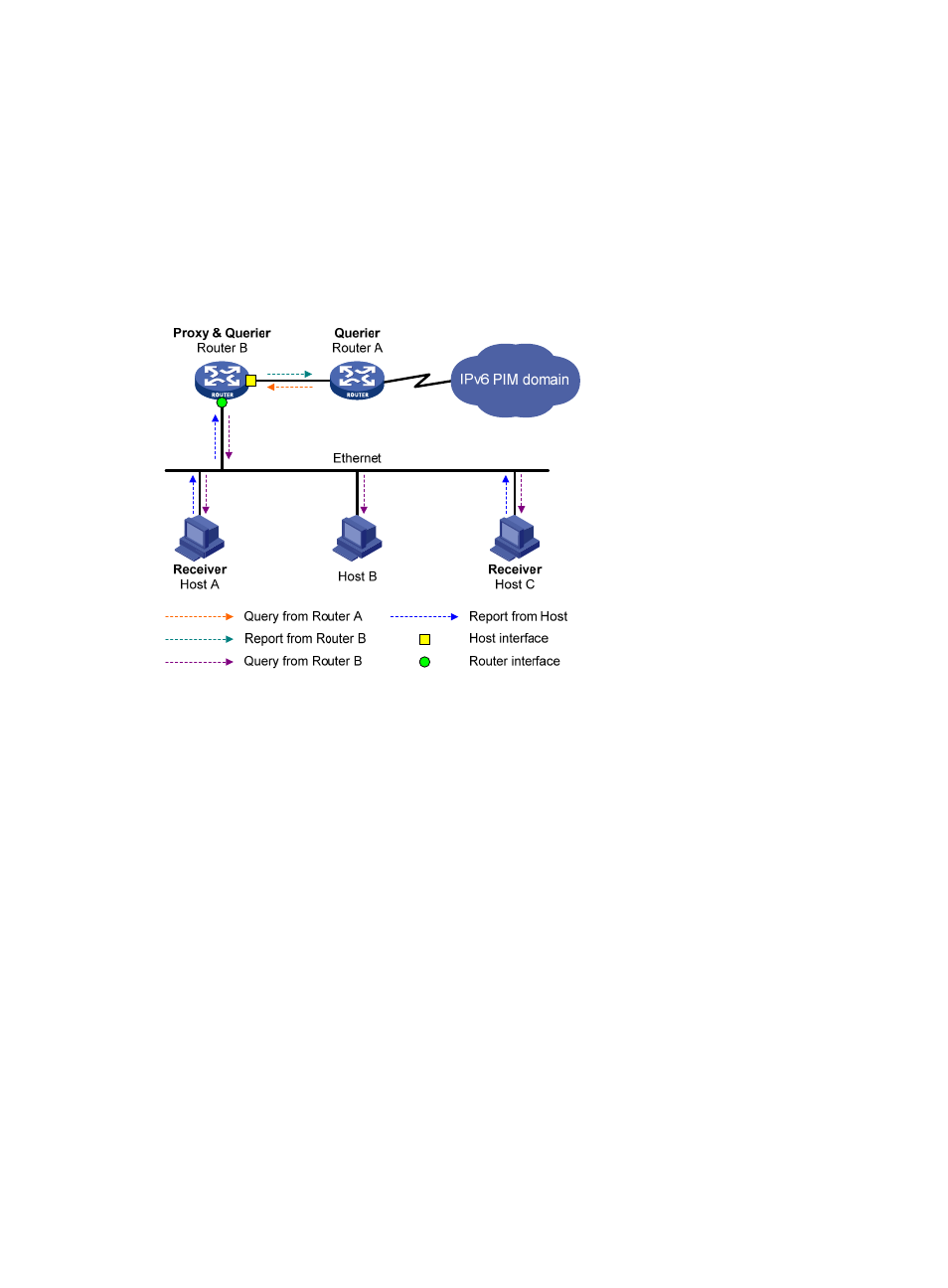Mld proxying, Protocols and standards – H3C Technologies H3C S12500 Series Switches User Manual
Page 364

348
MLD proxying
In some simple tree-shaped topologies, you do not need to configure complex IPv6 multicast routing
protocols, such as IPv6 PIM, on the boundary devices. Instead, you can configure MLD proxying on these
devices. With MLD proxying configured, the device serves as a proxy for the downstream hosts to send
MLD messages, maintain group memberships, and implement IPv6 multicast forwarding based on the
memberships. In this case, the MLD proxy device is a host but no longer an IPv6 PIM neighbor to the
upstream device.
Figure 96 Network diagram
As shown in
, two types of interfaces are defined on a MLD proxy device:
•
Upstream interface—Also called the "proxy interface." A proxy interface is an interface on which
MLD proxying is configured. It is in the direction toward the root of the multicast forwarding tree. An
upstream interface acts as a host that is running MLD. Therefore, it is also called a "host interface."
•
Downstream interface—An interface that is running MLD and not in the direction toward the root of
the multicast forwarding tree. A downstream interface acts as a router that is running MLD.
Therefore, it is also called a "router interface."
A device with MLD proxying configured maintains a group membership database, which stores the
group memberships on all the downstream interfaces in this database. Each entry comprises the multicast
address, filter mode, and source list. Such an entry is a collection of members in the same multicast group
on each downstream interface.
A proxy device performs host functions on the upstream interface based on the database. It responds to
the queries according to the information in the database or sends join/leave messages when the
database changes. The proxy device performs router functions on the downstream interfaces by
participating in the querier election, sending queries, and maintaining memberships based on the
reports.
Protocols and standards
•
RFC 2710, Multicast Listener Discovery (MLD) for IPv6
•
RFC 3810, Multicast Listener Discovery Version 2 (MLDv2) for IPv6